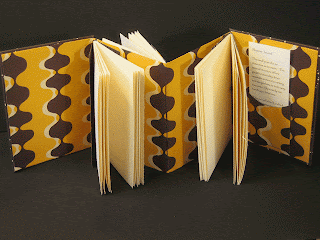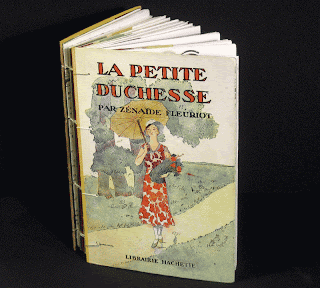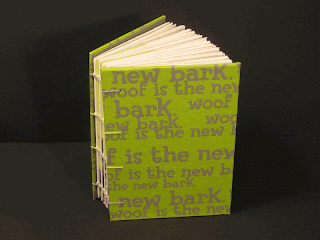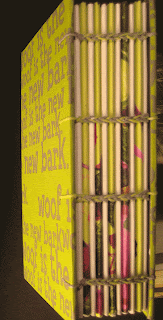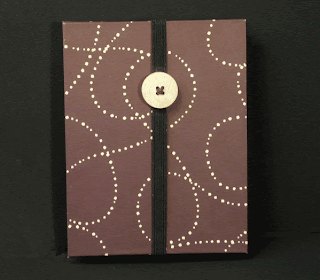 Before Christmas, I spent several days making books -- for one, I borrowed a form that I learned in my very first class in book arts, called a "Spine Surprise;" for another, I used the covers of a lovely old book in French that I'd had on my shelf for over a year; for a third, I re-discovered a sheet of paper that was perfect for a "puppy journal." (I'm still not sure what a puppy journal is, , but as the owner of a new puppy, I knew I had to make one!)
Before Christmas, I spent several days making books -- for one, I borrowed a form that I learned in my very first class in book arts, called a "Spine Surprise;" for another, I used the covers of a lovely old book in French that I'd had on my shelf for over a year; for a third, I re-discovered a sheet of paper that was perfect for a "puppy journal." (I'm still not sure what a puppy journal is, , but as the owner of a new puppy, I knew I had to make one!)The Spine Surprise book is an accordion-style book with signatures on both sides. One side has pockets and and a signature pamphlet-stitched into the center fold; the reverse side contains two signatures, one in each corresponding folds. The book is secured it with an elastic band.
The other books are coptic-stitched. I used a four-needle binding and combined two different colors of waxed linen thread.
